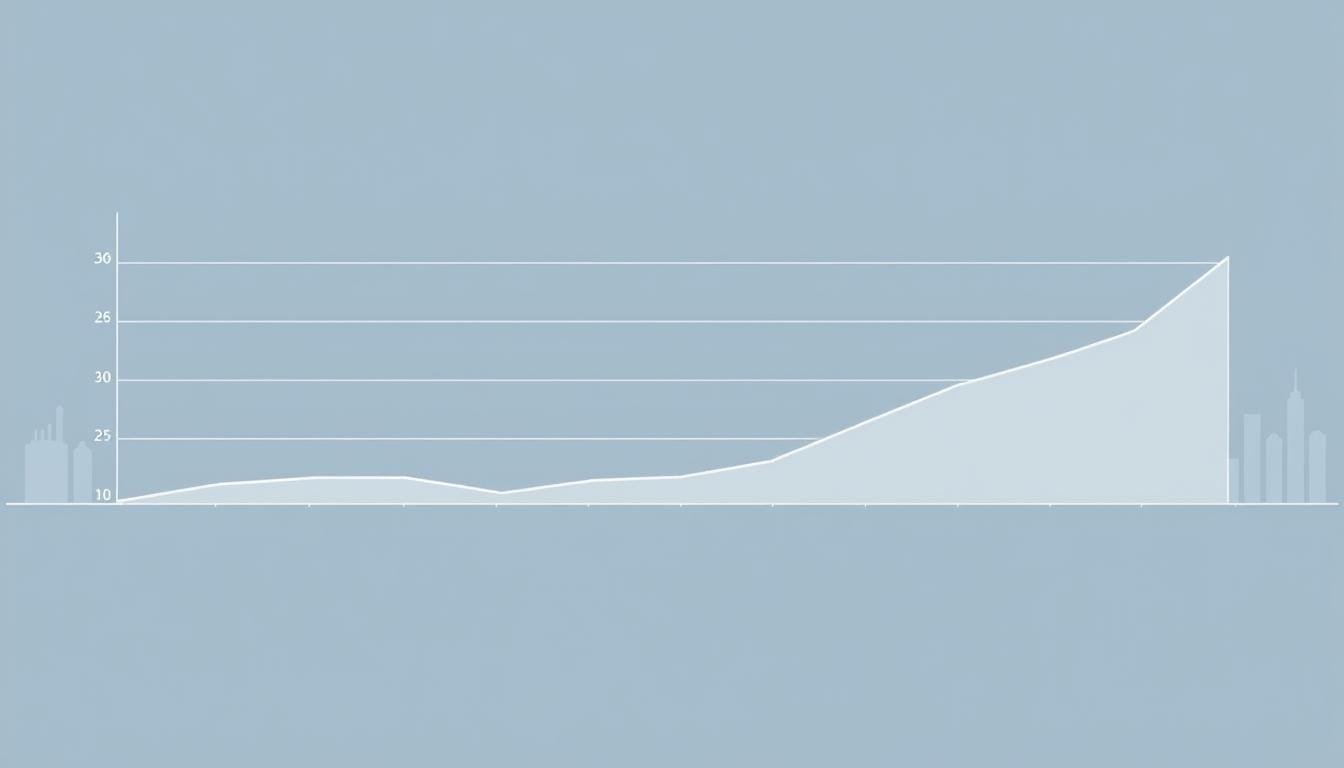As the aggressive cycle of central bank interest rate hikes ends, we enter a critical time in global finance. The year 2023 has shown economic resilience in major economies, against the expected downturn. Yet, the coming year might show slower growth, balancing between economic stagnation and slight shrinkage.
This calls for smart growth strategies with a deep understanding of post-contraction recovery. With inflation softening and a possible halt in rate hikes, we navigate through a still, yet ready, economy. We aim for careful actions led by wise fiscal policy and inflation management.
In the U.S., we see our economic story blend with those of developed markets (DMs). Thinking about rate cuts by mid-2024 makes us hopeful, reflecting past trends. Knowing central bank plans and the impact of fiscal policies will shape our post-contraction recovery.
We, including investors and policy makers, face new challenges and chances. We must understand and act on the economic changes ahead.
Key Takeaways
- The anticipation of an economic slowdown in 2024 succeeding a period of resilience.
- The end of developed market rate hikes, potentially ushering in a phase of fiscal policy adjustments.
- Increased recession risks due to stagnant growth, with the U.S. trajectory aligning with broader DM trends.
- Potential for a soft landing with inflation rates stabilizing within the target range.
- A historical precedent of central banks cutting rates significantly during economic downturns.
- Understanding that economic stagnation often leads to challenging labor market conditions and stable or declining asset values.
- The role of government interventions in stimulating economic growth during stagnation.
Understanding the Economic Landscape After a Contraction
The world is feeling the aftermath of a global economic reset. We’re still hearing the echoes of recent downturns. To understand the effects and move forward, we must closely examine the economy. This includes looking at interest rates, how tough economies bounce back, and the plans of DM central banks.
The Impact of Interest Rate Cycles on Post-Contraction Growth
Interest rate cycles play a big role in economic recovery after a downturn. DM central banks recently stopped raising rates so quickly, sparking talks about possible rate cuts. These cuts often surprise the market and don’t always mean a downturn is coming.
Inflation dynamics are important and affect how banks set their rates. Countries like Australia and Canada often show where the economy might be heading. They are sensitive to changes in interest rates, hinting at upcoming economic trends or slower times.
Surveying the Resilience of Major Economies in 2023
Some economies are doing well despite recent challenges, thanks to strong financial plans and quick market reactions. The U.S., for example, is keeping up with other major economies. It might face slow growth or a slight downturn. How well an economy can withstand challenges is key for central banks when they plan their strategies.
On the other hand, the UK and Europe are more at risk. This is due to things like geopolitical tensions and their dependence on trade.
Anticipated Downshifts: From Resilience to Stagnation or Mild Contractions
After a contraction, economies are careful with their budgets and adjust their markets. In the U.S., despite its strong economy, savings are dropping and loan costs are going up. This makes people think it might be heading for a period of no growth.
By understanding these patterns, we can better predict how recession risks might affect the stability and growth of major economies. It also shows how central banks in developed markets need to balance economic stability with the challenges of inflation and spending cuts.
| Country | Resilience Factor | Economic Trend |
|---|---|---|
| United States | High | Potential Stagnation |
| United Kingdom | Medium | Mild Contraction |
| Europe | Medium | Mild Contraction |
| Australia | Low | Marked Slowdown |
| Canada | Low | Marked Slowdown |
Strategies for Navigating a Flat Economic Growth Phase
In this section, we dive into powerful strategies for sailing through slow economic times. We’ll focus on improving risk management, finding good investment chances, and making sure your portfolio is well-rounded. These tactics address the tough spots caused by economic standstill and the growing importance of using assets as finance in private markets.
Assessing Risk Management in Uncertain Economic Times
When the economy is shaky, managing risks is key. Strategies for assessing risk keep your investments safe from unexpected market changes and downturns. For instance, data from past cycles shows essentials like utilities and healthcare tend to do better in recessions, meaning these sectors are less risky.
Investment Strategies to Consider During Economic Stagnation
Focusing on different places to put your money is crucial when the economy isn’t growing. Look towards areas that usually do well when times are tough. Asset-based finance in private markets is becoming more popular as traditional banks pull back from some loans. Also, consider investing in quality medium-term bonds and U.S. agency mortgage-backed securities. They have strong yields and have done well in past downturns.
Importance of Portfolio Diversification Across Asset Classes
To get through times of no growth, it’s wise to spread your investments across various types of assets. This means investing in stable markets and finding value in debt from developing countries. Consumer discretionary stocks have done especially well at the start of every cycle since 1962. Adding high-yield corporate bonds to your mix, which have seen good gains, can also make your portfolio stronger.
By using these strategies, you can steer through the tough times of no economic growth. Focusing on risk management, looking for chances in asset-based finance and private markets, and diversifying your portfolio will help. Knowing about past data and recent trends makes your strategy more grounded in reality, fitting both today’s economy and future expectations.
Achieving Growth During Economic Stagnation: Insights and Innovations
In times of economic stagnation, adopting growth strategies focused on technological innovation and productivity enhancement becomes vital. The introduction of generative artificial intelligence marks a pivotal point. It offers vast possibilities for many sectors.

Generative artificial intelligence goes beyond task automation. It also reinvents processes, boosting productivity. By incorporating these technologies, businesses move from old ways to efficient, tech-based operations. This change is key for stirring growth when the economy slows down.
| Region | 2024 GDP Growth Forecast | 2024-2025 Economic Downside Risk | Wage Growth Since 2019 | Projected Population Change by 2033 |
|---|---|---|---|---|
| USA | 1.0% | -1.7% | 20-25% | -0.4% |
| China | 4.5% | -3.0% to -1.0% | N/A | -2.9% |
| Europe | 0.8% | -2.4% | Modest Increase | -0.8% |
This information gives an overview of the global economy. It shows why new strategies are needed. By using innovative approaches centered on technological innovation, countries and businesses can navigate these challenges effectively.
The role of generative artificial intelligence is becoming ever more crucial. It boosts productivity even in sectors that are slow to innovate. Our aim should be to use these advances for real growth, not just to get by.
Central Bank Policies and Their Role at a Point Where Economic Growth is Flat Following a Contraction
When economic growth is slow after a contraction, what central banks do is very important. It’s vital to understand how their policies post-contraction can help the economy bounce back.
Lagging Effects of Monetary Policy on Economic Revival
The impact of monetary policy on the economy doesn’t happen right away. It can either make economic stagnation worse or ease it. For example, the New York Fed’s DSGE model shows that certain conditions, combined with strict monetary policies, lead to long-lasting economic downturns.
Flexible strategies like Flexible Average Inflation Targeting (FAIT) work better. They stabilize inflation and help economic recovery with less policy meddling.
Comparative Analysis of Global Central Bank Approaches
Different central banks have their ways of moving from recession policies to reviving the economy. The European Central Bank is starting to relax its policies, while the Bank of Japan plans to keep cutting its policy rates slightly. This shows the need for policies that are adjusted to each country’s economy and global connections. These approaches help soften the economic blow and make recovery smoother.

Future Outlook: Predicting Shifts in Central Bank Policies
In the future, we expect many central banks in developed countries to start cutting policy rates by mid-2024. These cuts will reflect past patterns but consider current economic conditions. Historical data usually point to a 500 basis point reduction as central banks face recessions.
Knowing this and having current economic data lets investors and policymakers plan better. They aim for a balanced and lasting economic upturn.
Economic policies, especially about public deficits and structural changes, are essential. They tackle immediate financial issues and support long-term economic strength. This approach combines monetary and fiscal strategies.
To navigate through slow growth after a contraction, keeping up with central bank policy changes is key. Recognizing these trends helps us prepare for what’s ahead, creating a strong base for lasting growth.
Fiscal Stimulus Measures and Their Impact on Post-Contraction Recovery
Fiscal stimulus measures play a key role in supporting economic recovery. These measures help various sectors and regions bounce back. Government intervention in fiscal policies aims to soften the blow from economic downturns. The goal is to pave the way for a sustainable recovery. A well-planned and executed fiscal policy can kickstart economic growth after tough times.
Examining the Efficacy of Government Stimulus in Spurring Growth
The success of fiscal stimulus depends on its ability to tackle immediate economic problems and set the stage for future growth. For example, when the government spends more during a recession, it helps keep people in jobs and consume more. This is crucial for economic recovery. Studies show that stimulus checks and benefits not only aid people but also boost overall economic activity.
Global Perspectives: Fiscal Measures Across Different Economies
Global fiscal policies differ greatly. Developed nations, with more financial wiggle room, can afford big stimulus plans without worrying about debt right away. Emerging economies, already dealing with debt, might choose more focused efforts. This choice greatly influences their economies’ long-term economic impact.
Long-Term Impacts of Fiscal Stimulus on Economic Trajectories
The long-term effects of fiscal stimulus are complex and depend on how and when governments apply it. Too much stimulus for too long can result in high debt. This might require tightening the purse strings later, which can slow growth. But, stimulus that’s well-timed and properly sized can help economies recover smoothly from shocks, leading to future growth.
| Indicator | Pre-Stimulus | Post-Stimulus |
|---|---|---|
| Real GDP Growth (%) | -5.1 | 2.7 |
| Unemployment Rate (%) | 10.1 | Improvements expected |
| Household Net Worth (Trillion USD) | Decrease by 16 trillion | Increase by 1.7 trillion |
| Public Debt as % of GDP | High and rising | Elevated, stabilization needed |
In conclusion, when looking at global fiscal policies and their effect on economic recovery, it’s clear that strategic use of fiscal stimulus measures and smart government intervention are crucial. They help tackle immediate challenges and lay the groundwork for long-term economic health.

Conclusion
Looking back at how economies bounce back, we see the journey is complex. Since 1960, the U.S. economy grew 5.5 times. But this growth involves more than just increasing GDP. It includes managing money matters, planning the economy smartly, and becoming stronger. However, even with this growth, our happiness levels have fallen. So, when recovering from economic downturns, we should aim for fairness and happiness for all.
Improving our economic future means looking at new ideas like renewable energy sources. These new technologies use materials such as steel, silicon, and neodymium. But, we must also be aware that there are limits to how much we can improve product efficiency. At the same time, creative ideas like a guaranteed minimum income, fairer taxes, and stopping pointless speculation are crucial. They show we can think outside the box to make the economy fairer. As we think about limiting growth for the planet’s sake and tackle the problem of stagflation, we face key challenges in our economy. To understand these issues better, we look at studies like those from the National Bureau of Economic Research.
Stagflation’s impact in the past makes us think hard about economic theories. The 1970s made us reconsider old ideas, leading to changes in how we plan the economy. The future will challenge us to adapt and plan wisely. Recognizing what works after an economic downturn helps us. It prepares us for change, supports growth, and helps us build an economy that cares about the planet just as much as profits.
FAQ
What characterizes economic stagnation and how can we recognize post-contraction recovery?
Economic stagnation happens when the economy hardly grows. It means more people are out of work, and not many are spending money or investing in businesses. We see recovery from this downturn when these issues start to get better. Look for signs like more jobs, increased spending, and businesses willing to invest again.
How do central bank interest rates impact the economy after a contraction?
Central bank interest rates help shape the economy’s future. Lowering rates can boost spending and investment. It encourages people and businesses to borrow money and act more freely with it. On the other hand, raising rates might slow down spending. This is because borrowing gets pricier, helping with inflation control.
What are the main growth strategies to employ during periods of economic stagnation?
In times of economic standstill, focusing on tech innovation is key. It helps make work more productive. Also, investing in assets that can withstand tough times is wise. Alongside, managing risks well to avoid the bumps of market ups and downs is essential.
Why is investment diversification important during economic stagnation?
Spreading investments over various areas is smart during slow economic times. It helps reduce risks. Some investments may not do well, while others might thrive. This way, the chance of big losses goes down, possibly leading to more even returns.
How might generative artificial intelligence contribute to post-contraction recovery?
Generative AI can be a game-changer in boosting productivity over the long haul. By taking over complex tasks, sparking new ideas, and making business operations smoother, it paves the way. This leads to growth and helps the economy bounce back.
How do central bank policies differ globally at a point when economic growth is flat?
When growth stalls, central banks across the globe respond differently. Their actions depend on local economic states, inflation, and unique hurdles. For example, while the ECB might ease policies to spark growth, the Bank of Japan could slightly increase rates.
What role does fiscal stimulus play in driving recovery after economic contractions?
Fiscal stimulus is a powerful tool for revival. It involves government spending more and reducing taxes. This can boost consumer spending and create jobs. In turn, this kickstarts the economy.
What are the potential long-term impacts of fiscal stimulus on economic trajectories?
Fiscal stimulus may speed up growth initially but could lead to higher inflation and more public debt later. It’s crucial for policymakers to weigh these immediate gains against possible future challenges.
